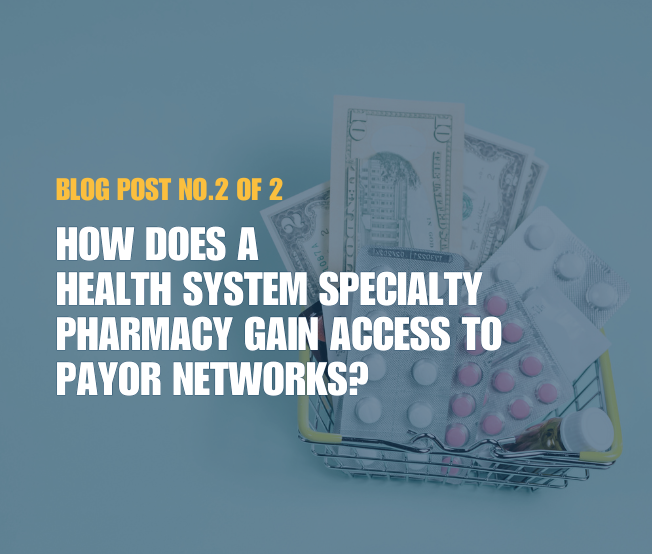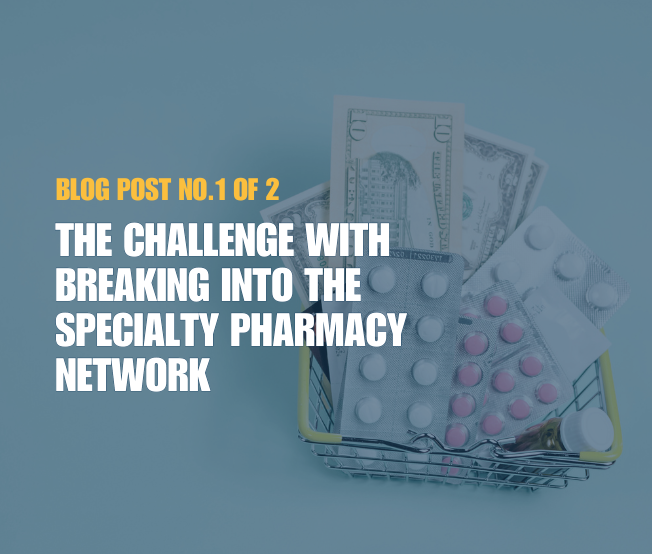
Blog: How Does a Health System Specialty Pharmacy Gain Access to Payor Networks?
Blog Post No. 2 of 2
Jerry Buller, Senior Vice President of Health Systems at Loopback Analytics
In our last blog titled, ‘The Challenge with Breaking into the Specialty Pharmacy Network’, Jen Jagodzinski, PharmD, discussed the key stakeholders and payor market dynamics. Given these challenges, if you’re still interested in pursuing network relationships, how does one go about it?
How does a Health System Specialty Pharmacy gain access to Payor Networks?
I’ve spent the last 10+ years working with health systems and their pharmacies. Not surprisingly, the number one barrier to servicing the patients seen within the health system at their own specialty pharmacy is lack of payor access. Different strategies have been employed to try to ‘break into’ the specialty pharmacy network by directly contracting with a payor and even directly with the pharmacy benefit manager (PBM) producing mixed results. Much of the difficulty in contracting has been exacerbated by vertical integration and the continual price pressures placed on payors and PBMs.
Stakeholder Alignment
Health systems and payors are united around a common goal – the health and well-being of the patient. The health system pharmacy leaders I’ve worked with over the years have a desire to simply take care of ‘their’ own patients (those seen within their medical system) and streamline the “continuum of care”. With specialty pharmacy Net Promoter Scores (NPS) in the 90s, the leaders feel strongly that their specialty pharmacy provides a better overall patient and provider experience. With pharmacists typically embedded in the medical clinics, their pharmacy staff is closely aligned with the providers enabling improved clinical insights and therapy decision making.
Similarly, payors and their designated specialty pharmacies state that providing clinical, cost-effective care is at the core of their centralized operational model with the ability to provide best-in-class patient service despite not having the ability to forge strong personal relationships locally with providers and patients.
Pricing Conflicts Despite Patient Care Alignment
While both specialty dispensing models demonstrate value in various clinical endpoints, often, the decision of which specialty pharmacies have dispensing access is a financial one. As described in the previous blog, drug discounts are typically negotiated by a pharmacy consultant or broker with a focus on driving down the cost of the entire pharmacy benefit through a PBM for a payor compared to their current spend.
As we know, many PBMs own their own specialty pharmacies and profitability for that business segment is also a priority. The PBM terms often incent payors through differential drug pricing to use their own specialty pharmacy making it difficult for other pharmacies to compete. Additionally, the PBM sector negotiates manufacturer rebates for payors to drive down the net cost of drugs. It is becoming more well known that rebates and 340B pricing do not work well together, not only for Medicaid, but for all lines of business.
While 340B value may play a role in the overall economics for health systems by enabling a high-touch, patient-facing integrated model of care for all patients, payors rely on savings through drug discounts and rebates. A health system’s 340B pricing causes an issue for payors. 340B claims are not eligible for a rebate. So, if your pharmacy is dispensing a specialty drug that is 340B-eligible for a payor’s patient, that drug could cost the payor more at your pharmacy that at a non-340B eligible pharmacy.
I hope you’re not thinking, ‘oh no, the dreaded ‘reduced price’ conversation’ or I want ‘all the reimbursement’ owed to my pharmacy! Many of you may have had the experience of reduced reimbursement terms for your pharmacy based merely on your 340B status. My intent is to try to clarify why this has been a tactic employed by various payors and how we can overcome the challenge. When payors and health system-owned specialty pharmacies seek to contract using ‘standard’ methods, the financial drivers for both can be threatened. As mentioned above, clinical quality and member experience are important, but pharmacy benefit consultants and brokers place a high value on rebates. Contracts with between 340B eligible health system specialty pharmacies will lead to loss of rebates and competitive positioning for the PBM and higher costs for the payors all other things being equal. Without addressing the disparities, there will be angry payor clients that are uninterested in contracting with the health system-owned pharmacy.
Solutions for Success
Novel approaches to contracting can help mitigate the negative impact to both payors and health system-owned specialty pharmacies. I believe we need to approach pharmacy contracting more holistically – viewing the medical and pharmacy benefit as one – and bridge the gap amongst the decision makers within the payor. Varying levels of understanding and lack of proper communication can result in missed opportunities.
In parting, instances of successful contracting are limited despite examples that indicate patients do better when treated and serviced by an integrated delivery network.
When we consider the underlying interests of both payors and provider-owned SPs, there seems to be common ground. Each side desires a positive customer/patient experience and strong, demonstrable clinical outcomes. Focusing on our common objectives and how we can help address each other’s concerns can be the key to unlocking the value for all stakeholders. Look forward to more specific pricing strategies in the next blog…..
"I believe we need to approach pharmacy contracting more holistically - viewing the medical and pharmacy benefit as one."

